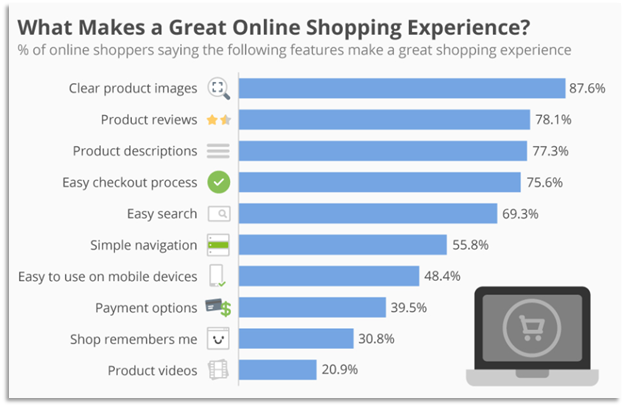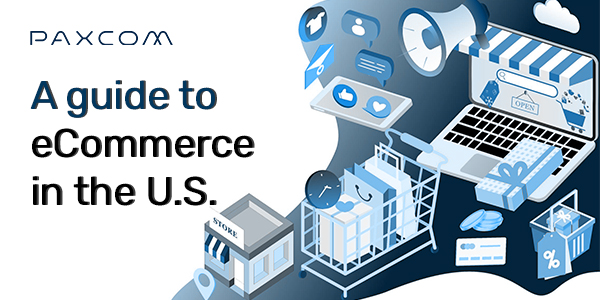In today’s global marketplace, if you want to tap into a wide range of customers, it’s important to expand your business around the globe. The United States is a country that is booming in terms of e-commerce. They possess high purchasing power, innovative technologies, and an obsession with online shopping.
But, on the other hand, it is a very mature market with prominent players already sitting on the top channels, making it hard for the newer category players to enter. You must understand what the consumer wants, where they spend their time, and which more contemporary marketing and business strategies can give you a competitive advantage.
That is why we have come up with this blog to give you all the necessary information to help you get started, whether you are a new seller or already selling—the insights will help you formulate strategies that will make 2022 work in your favor.
Let’s dive in. Should we?
Table of Contents
Markets and consumers in the United States:
Consumers are more diverse today than ever before. It applies not only to race and ethnicity, but also to income, education, geographic location, and more. This assertion is supported by data gathered by Deloitte and the McKinsey Group.
- More than 80% of consumers own smartphones, with half of them preferring to shop across a multitude of channels.
- Consumer groups such as millennials and high-income earners are still prominent online purchasers (wallet shares of 28% and 27%, respectively).
- The expected share of holiday spending is almost 62%, with 30% of those waiting for Black Friday to shop.
- Availability, convenience, and value are the strong drivers of making a purchase decision. (48%, 34%, and 30%) respectively.
- After COVID-19, 79 percent of consumers will expand or continue to use self-checkout in retail. Millennials and Gen Z are most likely to use contactless.
What factors are on priority for consumers when it comes to shopping?

Where are Americans spending their time shopping/discovering online?

So, how well are you prepared for the eCommerce acceleration?
eCommerce is becoming increasingly dominant in almost every field, with events happening in many places. Consumers are expecting a frictionless experience at multiple levels, but these heightened expectations pose a more significant number of challenges for brands and retailers.
Adapting to and controlling eCommerce in all of those environments is complex, costly, and technically challenging.
1. Adopting omnichannel selling strategy
To be competitive, you must be present where your audiences are. And, the pandemic pushed brands to launch on multiple platforms. Among 2000 people surveyed by Statista, 51% of them launched on an established marketplace, and 40% of them also forayed into the social media front. So, the retailers who expanded their selling channels are clearly the winners. Because they are offering what consumers want- convenience!
But this does come with complications- maintaining a solid combination of supply chain and fulfillment networks, along with sound backend operations.
2. Being visible in the saturated marketplace
Like it or not, with the sudden boom of eCommerce, many sellers are selling the same product, which is also available everywhere. You can start by managing accurate product listings, inventory, and stock levels. But this is just organic marketing. If you have a budget, you should also invest in paid ads. They help you by increasing your reach to many customers.
Sometimes you might need an additional set of hands to help you steer your brand wheel in the direction you want. And when that time comes, we have a team of content and design professionals and advertising strategies that have expertise in assisting brands in creating and optimizing their eCommerce content as per the marketplace guidelines.And when it comes to advertising, with the help of operations and technology, i.e., our advertising360 software team manages multi-million spends across different platforms and categories for leading or upcoming brands, using objective-based tailored strategies.
3. Automating inventory management
Controlling your inventory in uncertain times is also crucial to protecting your revenue and meeting customer expectations. Key supply chain mitigation strategies include diversifying the supply chain, accurately predicting future demand, and managing availability and product range across different sales channels to avoid overselling and customer service issues. This way, you can avoid overselling and customer service issues.
Retailers also need to have complete visibility across their business and bring together insights and data points from different departments to find problems that need to be fixed right away and accurately predict future demand to make the most of selling opportunities.
Paxcom’s data analytics tool, Kinator, can help you track on-shelf availability across platforms and send out custom alerts when your SKU goes out of stock. It can also track stock trends over time across all your channels, categories, and brands.
4. Facilitate Payment options
Americans usually prefer the convenience of card payments or PayPal, in addition to the one-click payment solution offered by Amazon. Brands should provide favorite options on their eCommerce store or website to reduce shopping cart abandonment.
5. It is time to look beyond text, images, and videos
Brands in the USA are already leveraging a combination of video and text in their ads, but it’s time to think beyond just how our technology is advancing. We should also go with our marketing techniques with consumers.
Let the AR que in- Sephora and Ikea leverage AR to offer consumers how a lipstick shade would like when they apply or how a furniture piece would look. With Snapchat, Facebook, Instagram, TikTok foraying into AR ads, many eCommerce websites incorporate that. It’s time to introduce your own.

Also, it’s impossible not to talk about the latest fad, i.e., Metaverse- Many brands are taking a plunge into the metaverse. Sneakers have taken center stage as digital wearables. Through blockchain technology, luxury items can be tracked from production to sales.
For example, last month, Nike initiated metaverse thinking into its retail operations with the purchase of RTFKT, a virtual sneaker company that focuses on fashion. This will save Nike money because they won’t have to make physical samples of the sneaker.

6. Importance of Sustainability to have a real impact
While we generally talk about the percentage of consumers wanting to buy eco-friendly products, we fail to address that more than 50% of the brands have started creating a sustainable strategy and promise to be eco-conscious in public to meet the public demand. So, you can see this is not just a passing trend, but rather a trend here to stay. With the government’s singing Paris climate, you can believe that necessary changes will be made, and it’s better to start with it now rather than be a late bloomer.
In a survey by eMarketer and RetailDive, it was found that
- 39% of brands are pivoting to finding sustainable-focused vendors and suppliers.
- 36% of sellers intend to reduce the amount of plastic in packaging materials and prioritize eco-friendly ingredients.
This indicates that businesses are taking this seriously, not just being a marketing slogan but also finding innovative ways to operate their operations sustainably.
A collaboration between Adidas and Parley for Oceans involved the production of 7,000 pairs of shoes made entirely from ocean plastic. After selling out instantly, another five million teams went into production, resulting in a billion-dollar line of products.

Closing Thoughts
Consumers’ purchasing habits have shifted for the better. The new normal is almost instant access to products with minimal effort. Selling strategies and logistics need to be rethought by brands.
As omnichannel and convenience become more important, retailers will be challenged to expand their business and penetrate new platforms like marketplaces and social media. Retailers must ensure their service levels meet the new, higher expectations of what a good shopping and fulfillment experience is. On top of this, consumers are now demanding businesses “go green” along with keeping up with newer technologies that enter the market and assessing whether they fit the brand or not.
The Paxcom team helps brands/sellers achieve global success, from introducing a new product into a new market to extending the footprint of an established brand. Our experts understand the challenges of the market and are proactively implementing business strategies and investments to mitigate them.For more information, you can connect with us at info@paxcom.net














